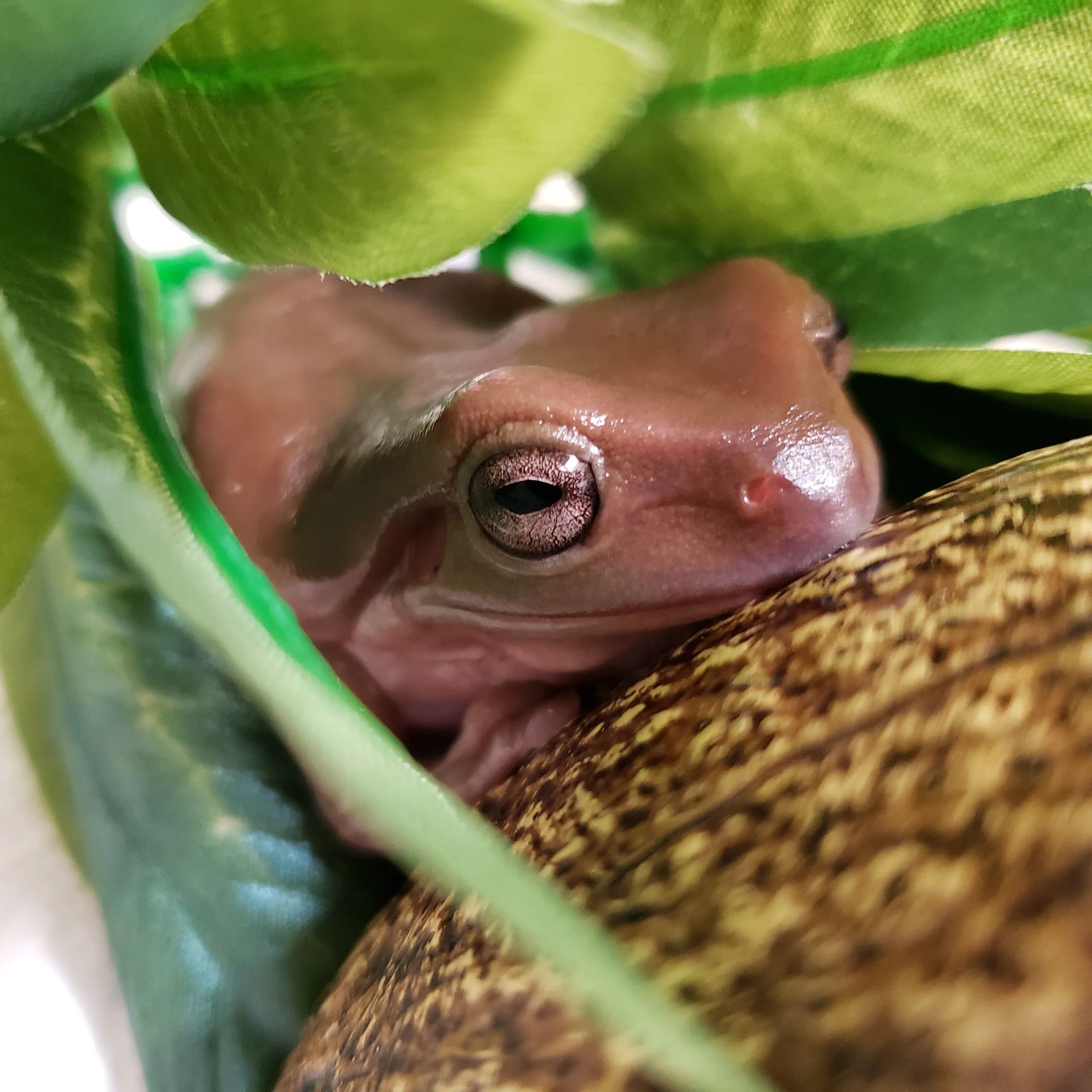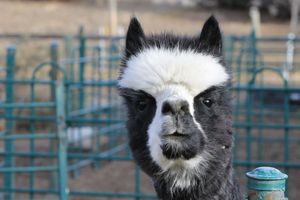
White's Tree frog
Litoria caerulea
White’s tree frogs are called this not because of their coloration, but because they were discovered by explorer John White. They are also known as green frogs, and/or Australian green frogs. Their coloration can vary from light bluish green to emerald green, scattered with gold spots on their sides, and as with many tree frogs, they can change between these colors most often to help with camouflage (the tree frogs at the Zoo can range from a green to a purple color). They are native to Australia and southern New Guinea but now can be found in many homes due to this species being common in the international pet trade.
Our Current Resident
Yoda, Male – Hatched between October 2017 - October 2018 (estimated and celebrated)
Yoda was donated to ZooMontana in 2020 and can hide very well in his habitat so visibility may be limited. Yoda is located inside and shares a habitat space with Leia. He is often sticking to the glass either on the wall in the back top left corner or on the glass in the front right corner (from guest viewing). It is quite easy to tell the difference between the two frogs as Yoda is smaller, may appear more purple, and has fewer white spots on his body.
Leia, Female- Hatched in February 2021
Leia came to live in ZooMontana in February of 2022 and, just like Yoda, likes to hide and can be hard to see at times. Leia is located inside and shares a habitat space with Yoda. She also frequents the same spots as Yoda, sticking to the glass either on the wall in the back top left corner or on the glass in the front right corner (from guest viewing). Leia is larger than Yoda and may either appear to be a greener color or purple color.
You can get to know Yoda and Leia better and meet them in person through our programs scheduled through the Education Department!
Taxonomy
- Kingdom: Animalia
- Phylum: Chordata
- Class: Amphibia
- Order: Anura
- Family: Hylidae
- Genus: Litoria
- Species: Litoria caerulea
Animal Facts
Insectivore: mainly eat insects like moths, locusts, and roaches
Population Status: currently listed as Least Concern
Habitat: have adapted for seasonally dry or wet habitats, prefer moist forested areas
Activity: nocturnal- mostly active during the night

















































